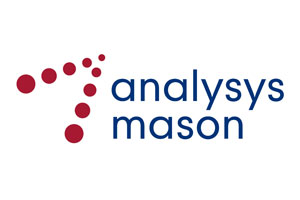Interest in unmanned aerial vehicles (UAVs) or drones is growing in the telecoms sector, as these machines become suitable for more use cases.
Operators (such as AT&T and Vodafone) and vendors (including Intel and Nokia) are exploring their potential roles in providing connectivity and other services to the drone market.
The drone opportunity is unlikely to be huge, but will provide new customers for connectivity and other, already-developed IoT solutions. It may open up new niche opportunities and also provide lessons for the larger driverless car market, says Tom Rebbeck, research director – Digital Economy, Analysys Mason.
Future drones will need some degree of connectivity
Figure 1: Wide-area connectivity requirements of selected drone types [Source: Analysys Mason, 2016]
| Drone type | Use case | Wide-area connectivity needed? |
Hobby drone |
| Unknown. (Regulation may restrict non-line-of-sight drones for hobbyists.) |
Autonomous commercial drone |
| ✓ |
Piloted commercial drone |
| ✓ |
Civilian drones typically use Wi-Fi connectivity at present. Future drones that travel beyond the line of sight may require wide-area connectivity, as described in the use cases below.
- Drones of all types, but especially larger commercial drones, may require approval before take-off. A drone may need to provide the details of its owner or pilot, or acquire permission to use airspace before taking off. Both of these approvals could be acquired over a wireless connection. The connectivity requirements would be relatively limited – existing cellular connectivity, and possibly lower power variants (for example, NB-IoT), could be sufficient.
- Autonomous drones are likely to need connectivity during flight. Autonomous drones (such as those monitoring agriculture or delivering packages) could theoretically fly using a pre-programmed route combined with on-board However, connectivity would be required to update this information during flight (if emergency services require other aircraft to vacate airspace, for example). Traffic management systems could also control the flight patterns of all drones. This use case would require low-latency cellular connectivity, potentially employing mobile edge computing.
- Piloted drones would need connectivity to fly. Piloted drones, such as those assessing damage after a natural disaster, require continuous connectivity between the drone and the pilot. Low-latency 4G (or 5G) connectivity would likely be necessary to provide video streaming, as well as telemetry data.
- Information gathered by the drone may need to be relayed in real time. Use cases such as live video streaming and environmental monitoring would require a live stream of data.
We understand that operators’ initial connectivity coverage tests are promising, although interference may be an issue. Any significant changes to connectivity that are necessary could damage the opportunity. It may be difficult to make a business case for improving network coverage in the air to improve drone connectivity alone.
The market for drone connectivity will be large, but probably not enormous
Various forecasts exist for the drone market, but the total number of drones is likely to be low relative to other IoT connections. For example, the USA’s Federal Aviation Authority (FAA) is forecasting total cumulative sales of 25.9 million hobby and commercial drones in the USA between 2016 and 2020. Many of these are unlikely to require wide-area connectivity, as they will only be used in line of sight.
Even if all commercial drones sold from 2018 to 2020 were connected to a wide-area network (and still flying) at the end of 2020, this would give a market of 7.9 million based on the FAA’s figures.
This is small, compared to our USA IoT cellular forecast of 101 million connections (not including drones) and 352 million handset connections. It seems likely that there would be a similar ratio of drones to IoT connections and handsets in other developed markets.
Operators should push for connectivity as part of the regulatory solution
Legislation will need to change to permit non-line-of-sight drones. Pressure for these changes is gaining momentum, as Amazon and others are looking at the technology. However, there is likely to be resistance, due to fears that drones will crash, collide with aircraft, or that those with cameras will invade privacy.
Many of these concerns may be unfounded (research suggests that the risk of drones striking aircraft is low) or covered by existing legislation (existing privacy legislation may be sufficient). However, connectivity could be part of a regulatory agreement. Operators should be exploring how mandatory connectivity could be part of the solution to allow drones to fly over longer distances.
Opportunities for operators may go beyond connectivity
The clearest opportunity for operators is connectivity, but other revenue generating possibilities may open up. Several possible examples are described below.
- Operating the traffic management platform. Operators could be part of a consortium to manage an automated air traffic control system for drones. Verizon Ventures, the venture capital arm of Verizon, has invested in PrecisionHawk, which is developing a traffic management solution for drones.
- Usage-based insurance. Many operators are already supporting usage-based car insurance. A similar model could be applied to drones.
- Data processing, storage and analytics. Telecoms operators’ advanced data analytics services could be offered to commercial drone operators as an extension of existing IoT solutions.
Drones may help operators with autonomous cars
The most important reason for operators to explore the drone market may be the market for driverless cars, rather than the direct opportunities presented by drones themselves. Autonomous drones have many features and challenges in common with autonomous cars.
In particular, both classes of machine require connectivity, but must continue to function reliably should this be unavailable. Traffic management solutions for drones and driverless cars will require connectivity to function, but will also need to be able to operate without a network if necessary.
The market for long distance drones faces many obstacles. Development may be slowed by regulation, the business case for commercial drones may be challenging or the technical problems of autonomous flying may prove to be insurmountable.
However, drones could be an interesting and not insignificant market, which could also offer lessons for the future challenges of driverless cars. Telecoms operators should provide support for this opportunity and push for a favourable regulatory environment.
The author of this blog is Tom Rebbeck, research director – Digital Economy, Analysys Mason.
Comment on this article below or via Twitter: @IoTNow_ OR @jcIoTnow










